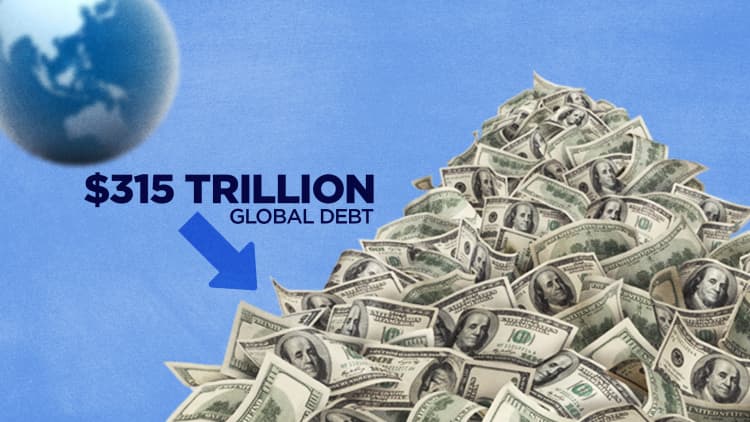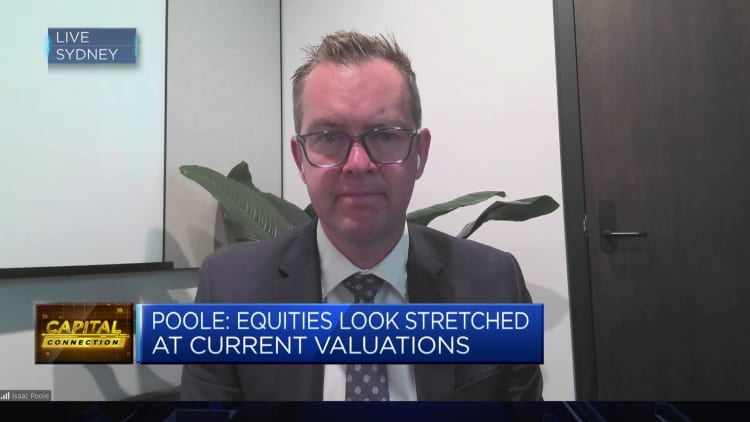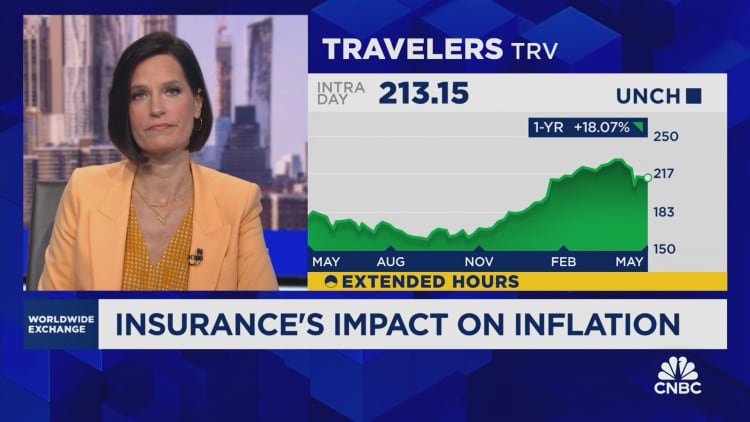Euro zone inflation increased to 2.6% in May from 2.4% in April, according to a flash reading from the European Union’s statistics agency. Headline and core inflation both came in higher than economists expected, but markets continued to fully price in an interest rate cut at the European Central Bank’s June meeting, following weeks of strong signalling from policymakers. Services inflation, a key metric for the ECB, rose to 4.1% from 3.7%. General view of the center of Corfu with a little restaurant in Old Town in Corfu, Greece, in May 2024. Sopa Images | Lightrocket | Getty Images
Inflation in the euro zone rose to 2.6% in May, statistics agency Eurostat said Friday, but a higher-than-expected print did not sway market bets of an interest rate cut from the European Central Bank next week.
Economists polled by Reuters had forecast a 0.1 percentage point increase from April’s headline figure of 2.4%.
Core inflation, excluding the volatile effects of energy, food, alcohol and tobacco, increased to 2.9% from 2.7% in April. A Reuters poll of economists had projected a flat reading.
The data comes with the ECB widely expected to cut interest rates at its June 6 meeting, the first reduction since 2019. The central bank for the 20-nation euro area began its latest hiking cycle in July 2022, hauling rates out of negative territory to 4% at present.
Any deviation from a 25 basis point cut at the ECB’s June meeting would be a major shock to markets, following weeks of strong signalling from policymakers.
In the wake of the reading, money markets continued to fully price in a June cut, followed by just one more reduction in 2024.
While headline inflation increased in May, fluctuations in the rate have been forecast over the coming months due to base effects from the energy market and the unwinding of government fiscal support schemes across the bloc.
Overall, the headline figure has cooled significantly from a peak of 10.6% in October 2022, languishing below 3% for the past eight straight months.
However, ECB members may pay greater attention to the rate of services inflation — a key indicator of domestic inflationary pressures — which rose to 4.1% from 3.7%.
Staff are also due to release their latest round of inflation and growth projections at next week’s meeting,







